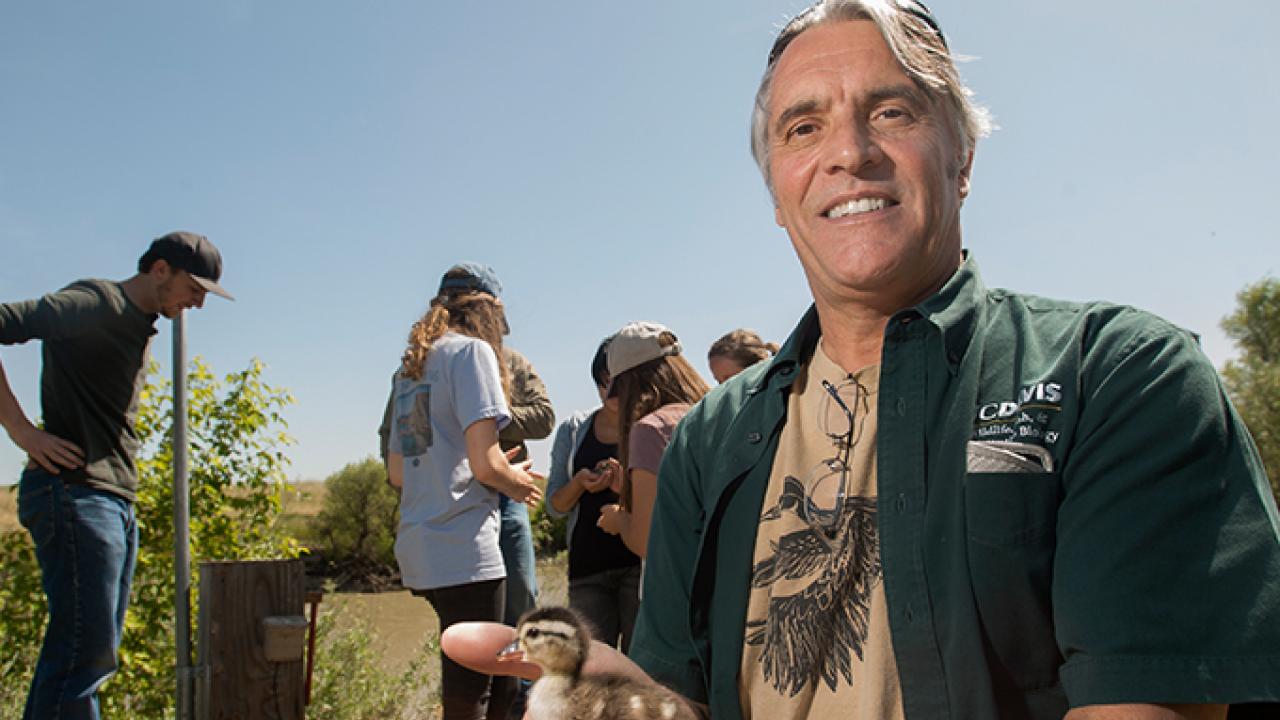
Wood ducks give students a wild experience
At UC Davis, wood ducks are known among students majoring in wildlife, fish and conservation biology as the wildlife model for an internship program run by Professor John Eadie. Each year, from 50 to 90 interns learn how to check nests, measure eggs, band birds, collect blood samples and conduct field research on waterfowl behavior, reproduction and survival.
Over the course of nearly two decades, Eadie has led the wood duck internship for hundreds of students seeking hands-on experience. “It’s a remarkable opportunity for undergraduates to learn field biology in our own backyard,” said Eadie, who holds the Raveling Endowed Professorship in Waterfowl Biology. “For many, it’s the first time they’ve ever handled a wild bird. The impact is transformational.”
Known for their showy plumage, wood ducks also have unusual reproductive behavior. Female wood ducks lay eggs in multiple nests, though why is not fully understood. Are they sneaky and duplicitous, hoping to get another female to do the hard work of incubating and raising offspring? Or are they communal and cooperative, helping to raise the offspring of close relatives?
To answer these questions and more, Eadie and his research team put tiny transponders in the birds (like the identification chip that veterinarians use for pets) and erect scanners at each nest site. Wood ducks prefer to nest in tree hollows along native waterways, which have largely been lost in California due to development. Fortunately, the birds are adaptive and will nest in manmade wooden boxes that simulate a tree cavity.
Most wildlife students intern during the spring quarter, when ducklings are hatching. Bailey Higa—a recent wildlife, fish and conservation biology graduate now working at Wildlife Associates in Half Moon Bay—interned for two quarters during her undergraduate years. “The wood duck experience is really great for learning how to collect accurate data in the field,” said Higa. “We were outside the whole time, and we had to carry all our instruments with us and work in different weather conditions.”
To provide duck habitat, several generous Sacramento-area landowners have spent millions restoring former agricultural fields to native wetlands along the Pacific Flyway. The owners of Bird Haven Ranch, Roosevelt Ranch, Conaway Ranch and Hedgerow Farms allow Eadie to erect nest boxes and monitor wood duck activity on their lands. The research is funded by the National Science Foundation.